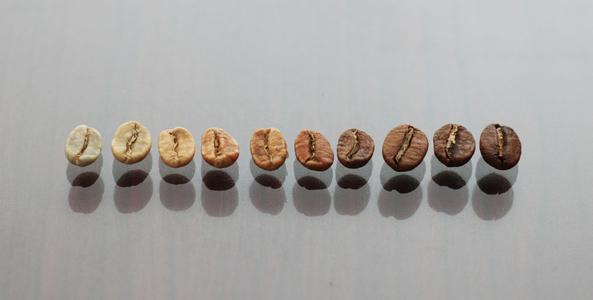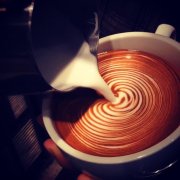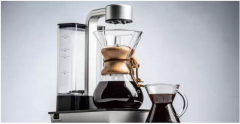Do not drink unbaked coffee roasting degree
The heat of shallow roasting is more mild, because the "fermentation catalysis" of flowers and fruits retain the most sour aroma, it is easy to smell the sour aroma of coffee. If the baking continues, that is, from the end of the first explosion to the middle baking before the second explosion, or even from just to the second explosion, most of the sour aroma of "fermentation catalysis" has been cracked and replaced by the taste spectrum of "sugar browning reaction" (Sugar Browning) and "Mena reaction" instead. Moderate baking sugar browning mainly refers to caramelization and caramel aroma, while Mena reaction is more complex, which is a browning and aroma-making reaction of carbohydrates and amino acids, producing attractive aromas of nuts, rice and wheat, dark chocolate and cream chocolate.
Raw beans of unroasted coffee, not suitable for drinking
It is worth noting that raw beans of unroasted coffee contain vomiting ingredients such as propionic acid, butyric acid and valeric acid. If you boil water and drink it without baking, it is easy to turn your stomach and even vomit, but these ingredients are neutralized after baking. Instead, it produces more charming aroma.
Sucrose, which accounts for about 6% of soybean weight, is the main raw material of coking sugar. Sucrose is about 130 ℃-170 ℃. Sucrose is pyrolyzed into low molecular weight monosaccharides, glucose and fructose, and releases aroma and carbon dioxide. But with the furnace temperature rising to more than 180 ℃, these molecular weight monosaccharides continue to aggregate and concentrate to form darker medium molecular weight caramel components with caramel aroma. Caramelization has been carried out to a little over 200 ℃, is coming to an end, and finally completely carbonized.
Therefore, as the temperature increases, caramelization produces different compounds with different odors, which is a very complex chemical reaction that scientists do not fully understand. Basically, the aroma of caramelization is the most attractive between medium baking and second explosion, which is why the baking degree of Agtorn#55 cup test is based on the degree of caramelization of SCAA cup. Once in the deep baking after the second explosion, the flavor is dominated by the more elusive drying effect.

Important Notice :
前街咖啡 FrontStreet Coffee has moved to new addredd:
FrontStreet Coffee Address: 315,Donghua East Road,GuangZhou
Tel:020 38364473
- Prev

Special coffee what is special coffee?
Nowadays, you can always hear the word "special coffee" in the coffee circle. In the past, almost every cup of coffee was called special coffee, but the wave of coffee represented by this word has not officially sprung up until today. According to the authoritative interpretation of the American Special Coffee Association (SCAA), special coffee (cooked beans) refers to those made of high quality, carefully roasted and professionally brewed, which can highlight the purest and most
- Next

The degree of coffee extraction how to extract coffee
Brewing coffee water temperature should be inversely proportional to roasting degree extraction water temperature is not consistent, American electric drip rate kettle due to different brands, mostly controlled in 92 ℃ 96 ℃ constant temperature extraction range, espresso machine according to the baking degree used by each store, the water temperature is set in 88 ℃ 93 ℃ range, basically, the deeper the extraction water temperature is lower, about 88 ℃, the more shallow roasting, the higher the water temperature
Related
- Beginners will see the "Coffee pull flower" guide!
- What is the difference between ice blog purified milk and ordinary milk coffee?
- Why is the Philippines the largest producer of crops in Liberia?
- For coffee extraction, should the fine powder be retained?
- How does extracted espresso fill pressed powder? How much strength does it take to press the powder?
- How to make jasmine cold extract coffee? Is the jasmine + latte good?
- Will this little toy really make the coffee taste better? How does Lily Drip affect coffee extraction?
- Will the action of slapping the filter cup also affect coffee extraction?
- What's the difference between powder-to-water ratio and powder-to-liquid ratio?
- What is the Ethiopian local species? What does it have to do with Heirloom native species?

